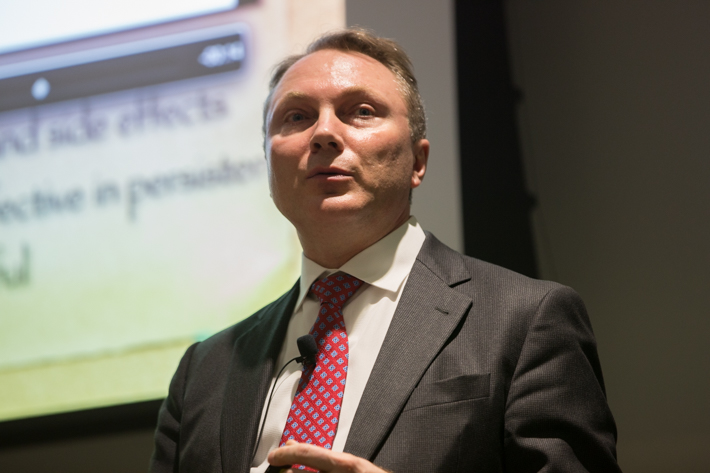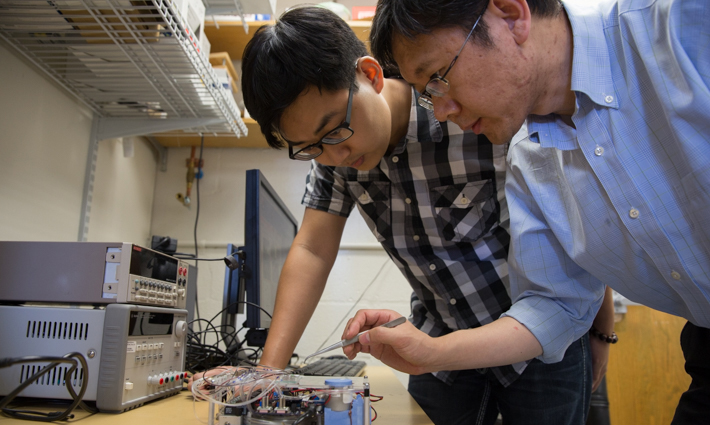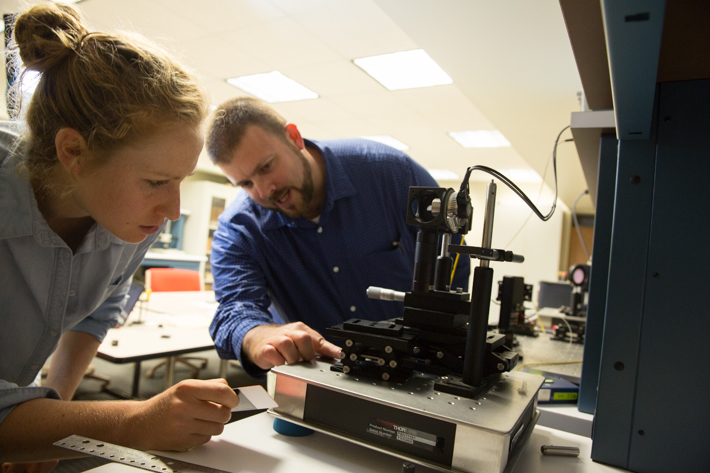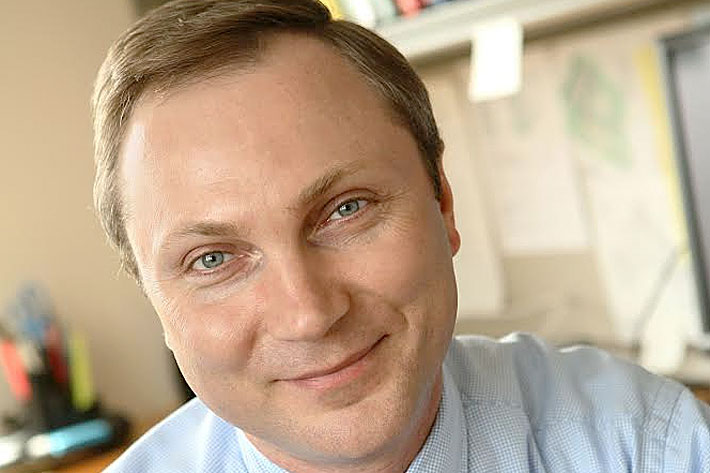Multiple generations of engineers served as the inaugural audience to occupy the Science and Engineering Hall’s glass-walled Lehman Auditorium on Wednesday. More than 150 George Washington University students, faculty and alumni gathered there to celebrate the launch of the Department of Biomedical Engineering.
The School of Engineering and Applied Science introduced its newest department last fall, but Wednesday marked its official beginning in a new, permanent home.
“For all of you who waited such a long, long time for this day, for the creation of this new department, we are finally there,” said SEAS Dean David Dolling.
For the past decade, GW biomedical engineers have made big strides in designing lifesaving technologies. Faculty are finding more effective ways to detect breast cancer, improving heart disease therapies, using plasma to treat cancers and developing portable, fast-acting medical diagnostic devices.
Now, with a department to call their own (and a building to share with scientists from across the university), researchers and students will find new ways to solve the country’s most pressing health care problems, said Igor Efimov, chair of the department.
“Innovation in the last century was primarily done in very large corporations,” he said. “More recently, universities are becoming generators of big ideas.”
Dr. Efimov, who joined SEAS this semester from Washington University in St. Louis, is the Alisann and Terry Collins Professor of Biomedical Engineering, an endowed professorship established through a donation from trustee Terry Collins, D.Sc. ’76, and his wife, Alisann. A gift from David Wang, B.S. ’51, and his wife, Cecile, will also help elevate the new department by providing support for student fellowships, a biomedical innovation center and interdisciplinary research collaborations.
Dr. Efimov has dedicated his career to engineering a healthy heart. The heart disease death rate in the United States has decreased by 68 percent since 1958—a huge achievement that Dr. Efimov attributes, in large part, to advances in biomedical engineering.
At GW, the renowned researcher will continue his work in advancing new therapies to treat patients with abnormal heart rhythms, such as an implantable, custom-built device that can more effectively and less painfully detect impending cardiac arrest.
Traditional defibrillators can deliver up to 1,000 painful volts of electricity to the heart, which can lead to long-term damage. Dr. Efimov’s gadget, by contrast, applies 100 times less energy to knock the heart back into rhythm. The device includes a network of more than 30 electrodes that can monitor electrical activity, resulting in more precise, accurate disease monitoring and limiting false positives.
To put GW at the center of biomedical innovation, Dr. Efimov’s long-term goals for the department include hiring 10 new faculty members by 2020 and using the university’s unique advantages in Washington, D.C.—like its proximity to the Food and Drug Administration, the National Science Foundation and the National Institutes of Health—to create graduate and Ph.D. programs in biomedical regulatory affairs.
“We can really use our location and leverage our resources to build a new degree that does not exist at other institutions,” Dr. Efimov said.
He envisions training students to learn the laws and regulations that apply to the development, testing and production of medical technologies.
“In the past our Ph.D. pathway had only one goal: to train future professors. Any other trajectory was not considered appropriate,” Dr. Efimov said. “Now we really have to consider that our Ph.D. students have many different professions to consider.”
Faculty said they also plan to capitalize on the department’s new location in the Science and Engineering Hall to build partnerships within the university.
“When I came to GW in 2006, it was my collaborations in the School of Medicine and Health Sciences that helped me to get a good running start in my research program. It was critical to show that I had the clinical and biomedical expertise on my team to do the work that I was proposing to do,” said Associate Professor Matthew Kay. “I think growing and cultivating those relationships are important.”
Increased awareness of the benefits of biomedical engineering advances has led to a high demand for the profession. Employment of biomedical engineers is projected to grow 27 percent from 2012 to 2022, much faster than the average for all occupations, according to the U.S. Bureau of Labor Statistics.
However, interest seems to be growing as fast as the field’s needs. The undergraduate major is among the most popular in SEAS, and there are around 100 accredited biomedical engineering programs in the country.
“What is the ceiling for this? Or is it endless?” asked Associate Professor Jason Zara. “Are we in a bubble?”
It’s a question that admittedly has concerned Peter Katona, a bioengineering professor at George Mason University who joined GW faculty in a panel discussion at Wednesday’s event. But, he said, he believes that the way for biomedical engineering departments and biomedical engineering students to distinguish themselves from others around the country is through “excellence.” And, he noted, the interdisciplinary nature of biomedical engineering makes it a flexible field of study.
“The beautiful thing about biomedical engineering is that you can combine some aspects of biology and some aspects of physiology, and there is a whole range of engineering. The intersections are really numerous,” he said.
Joel Myklebust, a deputy director at the FDA, assured the skeptics that he believes the medical products business “can’t do anything but grow.”
“There is still a lot of capacity that we can penetrate with biomedical engineering students,” he said.





